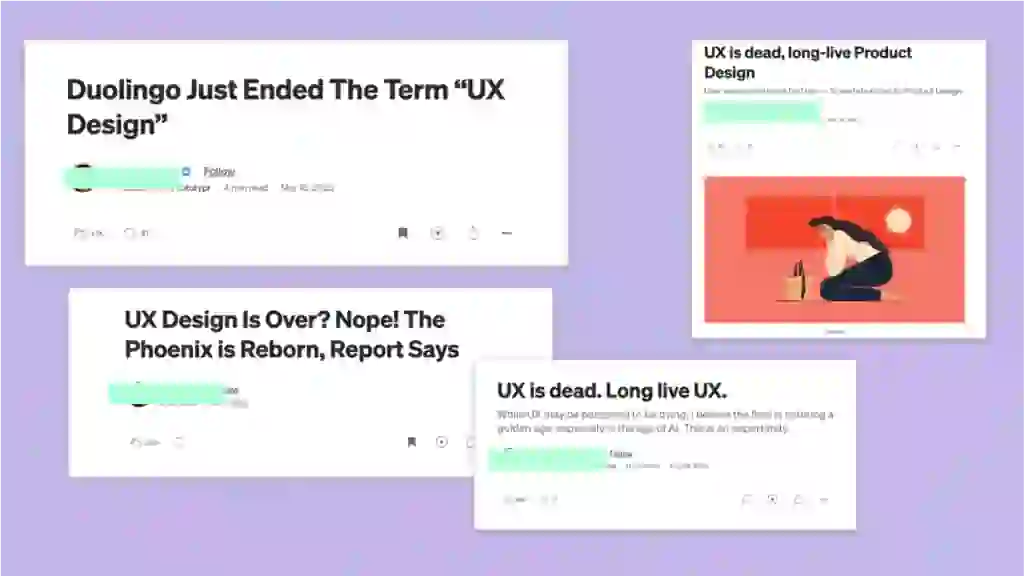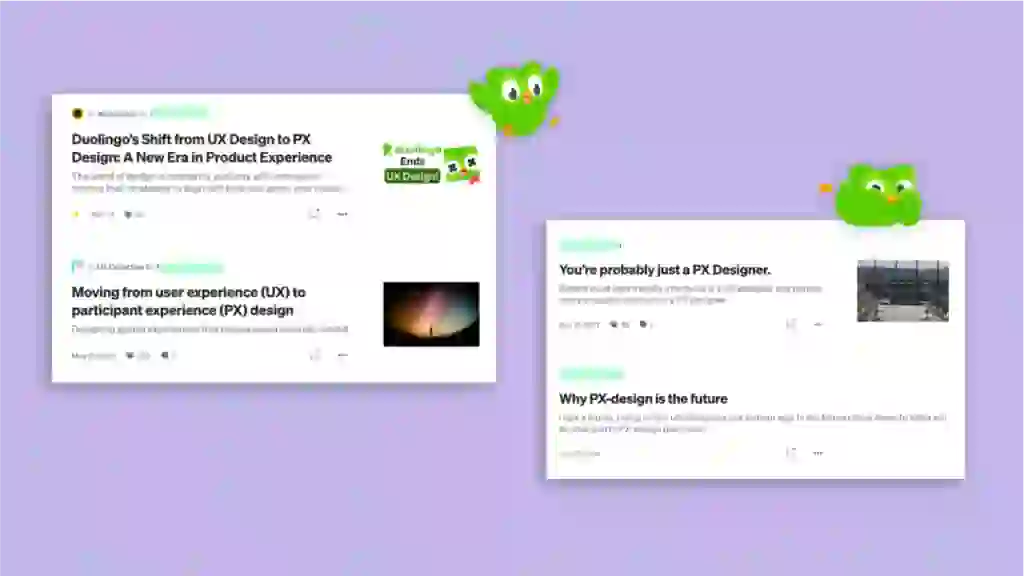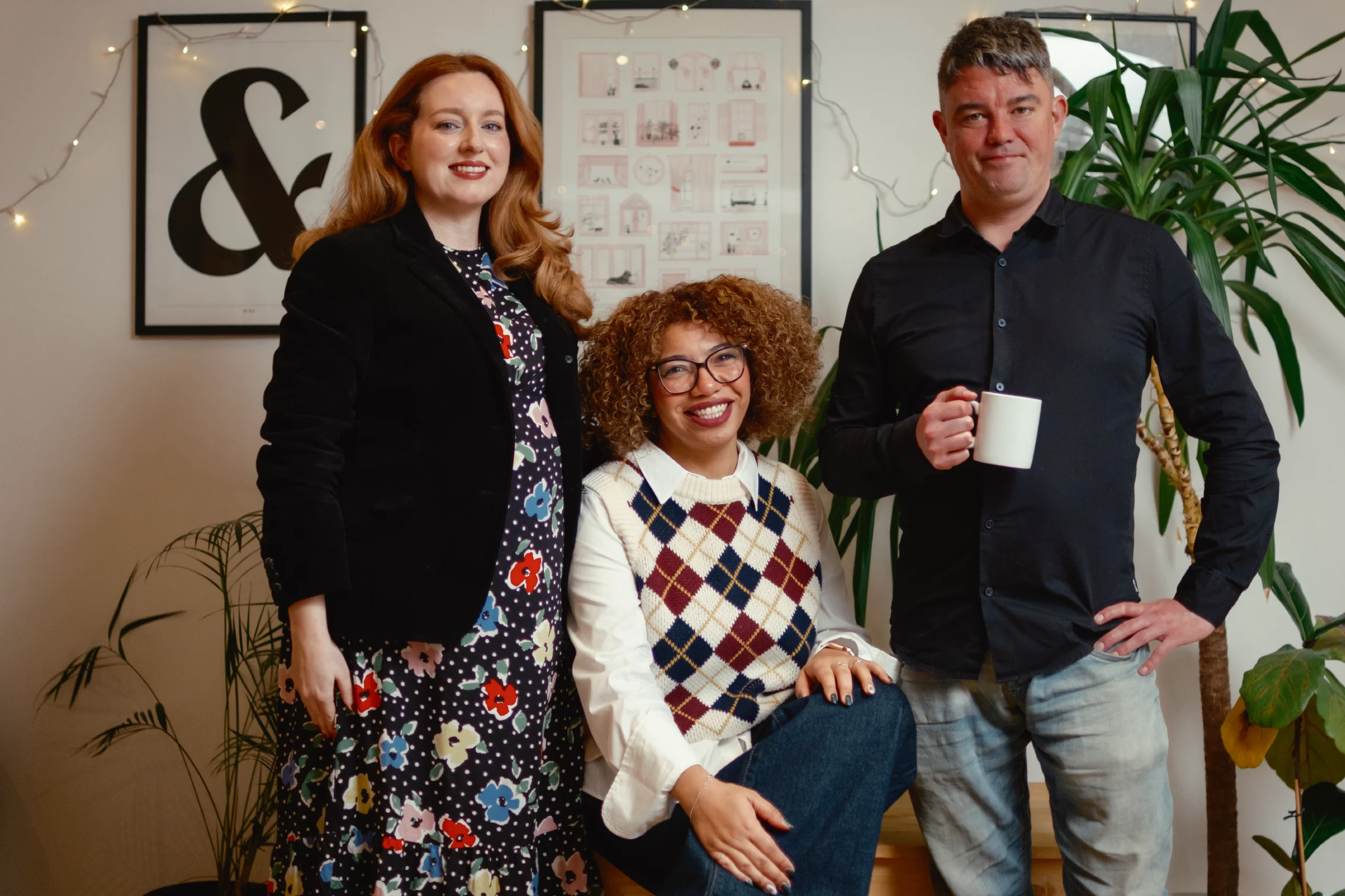I’ve been seeing way too many articles on Medium about how “UX is dead,” and I’m getting a bit annoyed about it now.
Duolingo recently, apparently, ended the term “UX” and introduced the term “PX”. And yes, I am rolling my eyes at this point.

Here’s what they said:
“Today at Duolingo we renamed the ‘UX’ function to ‘Product Experience.’ Duolingo is a product-led company. Product drives our business, culture, and priorities. Our function includes Product Designers, Product Writers, and Product Researchers. We gave the umbrella name ‘UX’ a shot. It never stuck. It didn’t feel like us. It felt… antiquated.”
“Our industry seems unsure about what to call ourselves. UI? UX? Split the difference with a forward slash down the middle? UI shapes a user experience, and UX serves a product. Yet it’s the product that matters most. We’re confident we’re product people.”

Okay. Of course we know where he’s coming from. Product design includes considerations across UX, UI, business goals, market fit, technical feasibility, and collaboration with developers, marketers, and stakeholders.
However, a good UX designer does all of that and more. I personally find myself doing all of these, along with user testing, research, and validation.
So, should I be calling myself a product designer now?
This whole shift seems like yet another attempt to remove the word “user” from our vocabulary. But that word still matters.
I don’t want to see UX dissolve or disappear. I don’t want us to ever stop thinking about users.
At Seedable, we’ve already started to move away from using the term “user” because it feels cold and clinical. We call them what they are “people”. But for the sake of clarity, let’s stick with “users” in this piece.
Duolingo says product drives the business. But it’s the experience people have through that product that keeps them coming back. If your users walk away, you have nothing.
And if you are not acting on feedback or observing behaviour, what are you actually researching? What are you improving?
Just because something works well does not mean you stop caring about the people using it. A successful product does not mean UX is complete.
So maybe this new term, “product experience,” is really just about making a good product more addictive. It is a shift that seems to prioritise retention tricks and premium upsells over human-centred improvements.
It also feels performative. You have nailed a few things, good for you. But why make a public statement? Why rename the entire discipline? Why frame it as a revolution when it is clearly a shift in internal language and structure?
We would be nothing without users. We would not have jobs if we were not constantly trying to understand their behaviours, reactions, and the ways they engage with our work.
So yes, I am against placing the focus solely on the product, even if it is just in the title.
That said, I do understand that expectations of UX designers have changed.
At first I thought, “Were we not doing enough?” Then I realised the problem is that some designers are not involved in the business side of things. They are stuck in old, linear processes and it shows in their work and in their portfolios.
There is a great article here that explains exactly what UX designers are missing.
We also need to talk about the AI panic in UX, but let’s save that for another time. I’ll leave you thirsty for that one.
Here’s my take.

UX is not outdated. It is evolving. And while our titles might change, our responsibility does not. We design for people, not just product profitability.
So here is my advice to UX designers. Be more honest about your work and your process. Nothing we do is linear. Stop trying to make it look like you had the perfect solution from the start.
People hiring want to see the challenges. They want to understand the mess, the uncertainty, and how you worked through it.
And do not just stay stuck in usability. Put on your business hat. Back your solutions with research and market understanding.
What we need now is a shift towards honest storytelling. That means moving away from the polished portfolio and the standard case study format. Let go of the obsession with perfect visuals and start building experiences that solve real problems and creates meaningful engagement.








